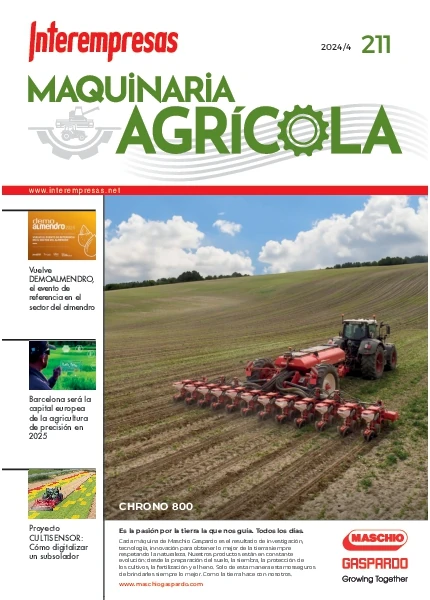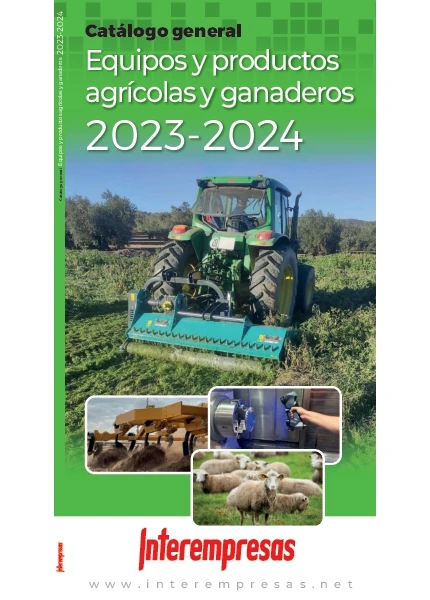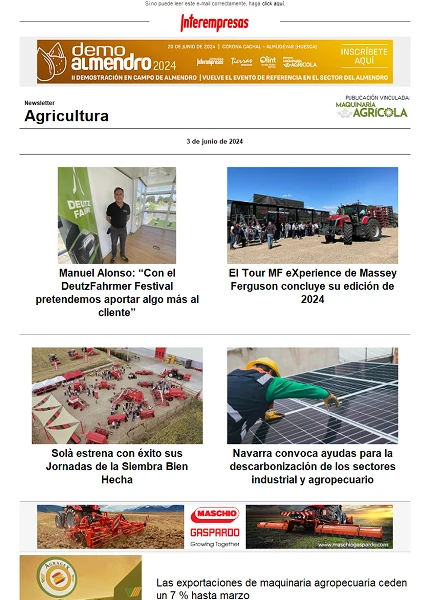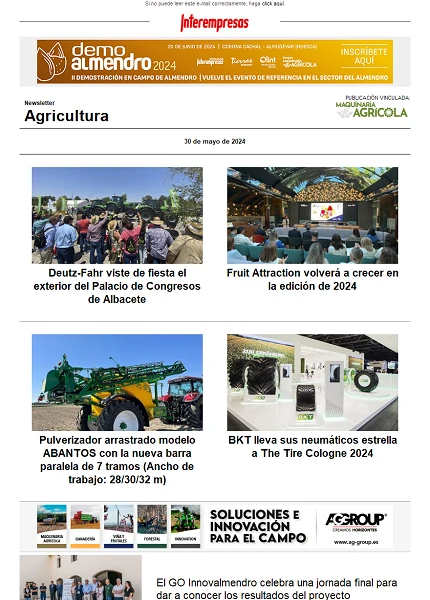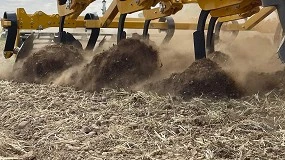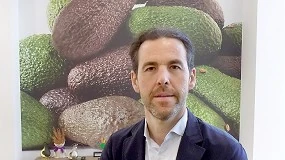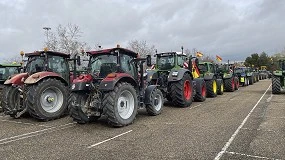Safety in the use of parks and forestry machinery
March 20, 2009
Type of the user
When we speak of mechanization of the agricultural environment there are many times that we set aside a broad sector of mechanization to which we could identify within rural and even urban and peri-urban environment. We are talking about the mechanization of forest work: forests and forests, landscaping, parks, municipalities, etc.
In this sense, it would be interesting to note the increasing number of this sector, both professional as well, and a very interesting way, the segment of the hobby. Why are we different professionals and other users? The reason is simple. From a point of view of use there are machines and products for professional users whose size, performance, and power is not consistent with odd jobs of family gardens.
On the other hand have sporadic users, which could be called "weekend", whose demand is based, above all, in the sencillez-precio relationship, perhaps leaving aside quality or even useful. In this case also can influence much "fashion" or councils and imitation of other nearby users.
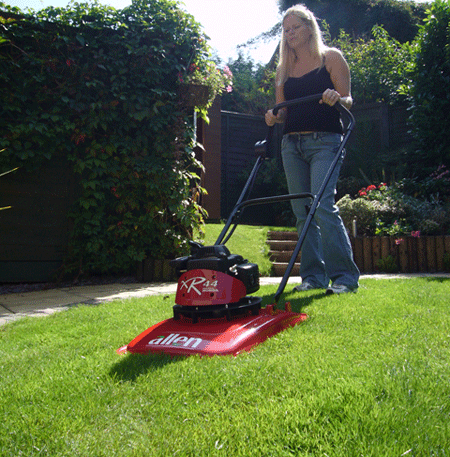
Safety in the use of forestry machinery, gardening and other green spaces
Many times, which we believe, more than have in our hands machines capable of cutting, slicing, splinter, chop or shred pieces of wood or large trunks. But not only think of chainsaws, desbrozadoras, grinders and crushers, a lawn mower cutting elements go together with engines with high powers, or even the use of plant protection products without proper control can lead to problems for the user.
Inappropriate use, without valid training or, as it is the case in most of the times, without even having read the instruction manual leads to problems of safety in the workplace. For the machine is being used by a professional motoserrista with years of experience as a family guy in the garden of his house. The chainsaw cut to put within the reach of his sword.
What can we do to reduce risk? From the point of view of the professional user, we must take into account that this must be qualified for the use of that machine, and not only this, but that you should learn about the use of the same.
The experience is a degree but not to know how any machine, even without being recycled over time. It must also take into account that the machine should do the work for which has been earmarked to the specifications of the manufacturer, with all the elements of security and safeguards that come standard on the machine. If we remove some already we are perhaps making a mistake by overconfidence. For the hobby or non-professional user that would emphasize would be the use of the most important tool: common sense. Overconfidence, also in this case, is that the user, usually with a reduced experience, take into account their own safety or that of those who are to her around. It is customary to perform tasks with machinery to do these things without clothing or footwear suitable (even with absence of them), or counting with the presence in the area of work of other people, including children.
Who is responsible security?
Security we could frame it in a double principle, on the one hand the proper design of the machinery and on the other hand the proper and responsible use of the same. It's an issue that affects equally to manufacturers and users. However it is in fact borders difficult to define because we tend not to understand where comes the responsibility of each one. Part of the manufacturers the user has a great responsibility in the security and the user are manufacturers (which are often demand full responsibility in case of accident), which should have all the care. In this double point of view which you can watch the issue of security, manufacturers, work, from the design phase, taking into account complex, extensive and difficult regulations that must be met to the marketing of their products.
Manufacturers must comply with a double regulation depending on the type of machinery placed on the market, whether it is this laptop or be considered as a vehicle. In the first case of occupational health and safety legislation are observed from the design phase. In the second case, the machines considered vehicles, would also take into account the road legislation taking into account the risks involved in transit of this type of vehicles by road. In short, if the user does not comply with his role, hardly can be the highest levels of safety in the use of this type of machinery.
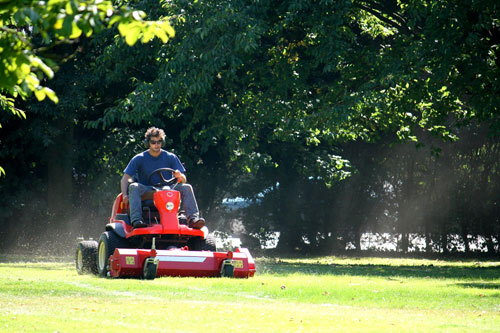
A work that aims to secure machines
What steps or tasks do that my product is safe? As already overtook the manufacturers must comply with an extensive legislation where can often become confused some terms such as type-approval and certification. If we talk about certification search to an organism refers essentially to vehicles and the procedure homologador, a specialized laboratory, determines that the vehicle has the requirements of the various pieces of legislation to develop the work for which it is intendedcomplying essentially with road legislation.
The laboratory or homologador body is which since then has the responsibility on the characteristics of the vehicle, to have approved the submitted specifications of the machine for which issued the type-approval. The manufacturer is working for the enforcement of existing legislation and the homologador approved the design. Within this approval we could distinguish two possibilities, on the one hand the European type-approval, EC, necessary for garden tractors, loaders or multi-purpose vehicles. The rest of machines aimed at this type of works of gardening and green areas may have a national type-approval, with the fact that only may be marketed in the country where they have been approved.
This national approval depends on the national laboratories, who in addition must have the approval of the Ministry of industry which accredits the machine, exempting from liability to the manufacturer. This approval requires a periodic certification on maintenance and status of use of the machine, carried out by means of specific laboratories, such as the ITV stations. As we overtook there are other means to get to the determination of the competence of a machine, in this case in relation to job security. Manufacturers on the basis of their knowledge about the capacity and maintenance of the machine can reach the self-certification. This instrument allows the manufacturers themselves who certify that machine is safe, provided that it is intended for uses that the manufacturer himself has been specified in the instruction manual.
This ability of certification is based on the work of intrinsic prevention which is carried out from the design phase which seeks to avoid the risks which may arise from the normal use or for which the machine is intended. Measures of protection, skirts, protections, etc., that would be added to the observance of the testing of security that specialized agencies in the field of standardization are designed to do so.
Legislation and standardization
What kind of legislation contains details that must be met by manufacturers in designing and commercializing its machinery?. There are a number of standards, some general and others specific. Between the General rules have the "directive machines", in the field of labour legislation in safety and health at work, which presents the list of risks that have to prevent manufacturers from the design phase. To do this they provide appropriate mechanisms, the engine or moving parts possessing machine safeguards and protections. In the specific field of forestry machinery and gardening machines who have more difficulty in this regard are those designed for use with wood, Court, chippers and shredders. From the point of view of the design work harder to bring the safety of machinery are related to the reduction of noise and vibration. This type of risk associated with the use of machinery, especially portable, are specifically legislated and prevent the continued use of this type of machine for long periods of time, in the case of manual workers.
Part of the general regulations also be taken into account a number of standards that meet the specifications and requirements in each type of machine. Standardisation would be the tool that provides the manufacturer to implement the legislation in force in each particular case. Currently there are two key agencies in the field of standardization. On the one hand the International Organization for Standardization, ISO, and on the other the European Committee for Standardization, CEN. To avoid confrontations unwanted among European or international standards there is the Vienna agreement that harmonises the rules ISO or CEN, to which the work of the 68 CTN, we uniríamos to avoid conflict and duplication of documents.
How does are elaborated standards? The first thing that should be noted on the normalization is a difficult job that must be taken into account multiple possibilities, types of machines or tests carried out. The second important aspect is that, in addition, should gather all that information in a single standard, whose character is valid for all manufacturers. Method of work carried out is revealed, therefore, difficult as it is carried out through multiple specific working committees. In them, first carried out a study of what is intended to legislate, to then make a draft to be voted on and on which the members of the Committee made comments and arguments. The time spent in the entire process is estimated at an average of 18 months until his release. Despite the long process, this work has certain advantages as with experts for each of the fields in which legislates. This allows establishing a path of application specific and direct, for the manufacturer, reducing their costs of production that is included in the approval process. Companies can make comments, exhibitions and proposal on standards submitted to being able to get to suit their interests or territories where to market their products. The disadvantages are precisely in the participation of a large group of people, which can delay the work. Also global interests can lead to conflicts in the application in various territories or regions, and even changes in production processes.
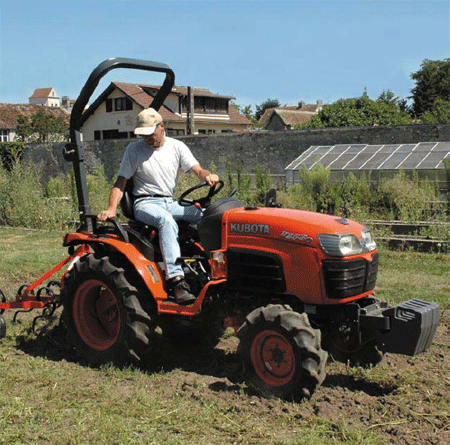
Warranty
As we have seen not only the work of the manufacturers, but also a legislative network complex ensures safety in the use of machinery, whether agricultural or, as in this case we have specified, forestry, gardening and green spaces. Perhaps we missing an aspect more related closely with this issue of safety and would be the guarantee. The relationship between these two aspects is simple and is based on the search for the person responsible for that address in the event that there is any problem arising from the use of machinery.
If we try to identify the person responsible should address our questions to the manufacturer product or, in the case of countries where the importer, the authorised representative, that is not another person that the company or subsidiary that sells these products. If we talk about security, the guarantee will be determined by the type of buyer and the use to be the team that has been sold or purchased. There is a principle of conformity by the manufacturer that the team is in line with the description made by the seller, i.e. There is no possibility of deception regarding the characteristics and properties of the product. The product, with regard to their characteristics, must be suitable for the uses provided for by the manufacturer, but in addition, must also be possible its use for other uses by the consumer, always previously informing the manufacturer or seller so this will advise on the use that can or cannot do. It should also take into account the quality and performance of the machine and that these conform to the expected or displayed.


